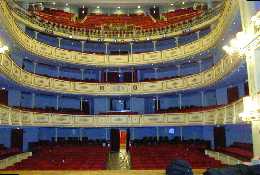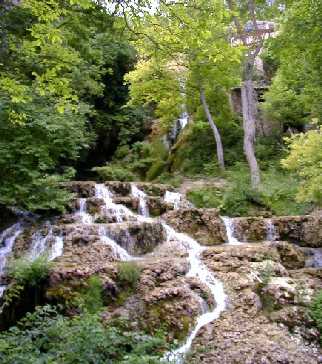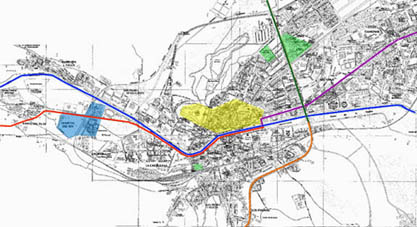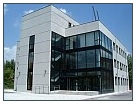Local Information
Burgos and its Province
The City

The city of Burgos has a population of 166,000. It is the capital of the province of the same name, one of the provinces belonging to the Autonomous Community of Castille and Leon. The city is outstanding both for its exceptional historic ad artistic heritage and for its geographical location, making it one of the most visited cities in Spain. The city can be easily reached by car, bus and by train, making it an ideal location for visits to Madrid and other places of interest.
Burgos is a richly historical city. Traces of its 1,100 years of existence are to be found on every corner. The most important monument is the Cathedral, declared by the UNESCO a World Heritage Monument, a true jewel of architecture. Other gothic churches of note for the visitor are Santa Águeda, San Esteban, San Gil, San Lesmes, San Nicolás or Nuestra Señora la Real Antigua de Gamonal. The Monastery of Las Huelgas and the Carthusian Monastery of Miraflores are also well worth a visit. Among civil monuments of great interest are the King's Hospital, today the site of the Law Faculty and the Rectorate; the House of the Cordon; the remains of the Castle -an old medieval fortification- and the old city wall; the arch of Santa María -remodelled as an arch of triumph in honour of the Emperor Charles V -and of San Esteban, in Mudejar style, and the arch of San Martín.

The countless monuments, parks and walks and the little streets in the
oldpart of the city make a wander through Burgos a fascinating experience.
Burgos is an active, modern and clean city, with a remarkable cultural life for a medium-size city. In Burgos one can enjoy high quality shows and performances for all kinds of audience, from the most classic to the last artistic tendencies (theater, dance, concerts, exhibits, installations, street theater, etc).
The Province
The province of Burgos is outstanding for the great variety of scenery, the number of villages of noteworthy historic and artistic interest, but especially for being the birthplace of the Spanish language. The traveller can choose from many varied routes throughout the province.
 For example, the valley of Mena or that of Valdivielso in the north, the
area around Sedano in the northeast, the sierra in the southeast or the
valley of the Arlanza river in the south, all offer a wealth of varied
scenery. Villages such as Medina de Pomar, Frías, Oña, Poza de la Sal,
Briviesca, Pancorbo, Sasamón, Covarrubias, Santo Domingo de Silos,
Lerma, Aranda de Duero or Peñaranda are just a few examples of
interesting places to visit on the many routes possible.
For example, the valley of Mena or that of Valdivielso in the north, the
area around Sedano in the northeast, the sierra in the southeast or the
valley of the Arlanza river in the south, all offer a wealth of varied
scenery. Villages such as Medina de Pomar, Frías, Oña, Poza de la Sal,
Briviesca, Pancorbo, Sasamón, Covarrubias, Santo Domingo de Silos,
Lerma, Aranda de Duero or Peñaranda are just a few examples of
interesting places to visit on the many routes possible.
Perhaps the area which deserves most attention is the Sierra de Atapuerca,known internationally for its paleontologic discoveries. This sierra is just 13 kilometres from Burgos, within the townships of Atapuerca and Ibeas de Juarros. The area is a cretaceous spur belonging to the Iberian System, which contains an extensive Karstic system formed in the basin of the river Arlanzón. This rich geographical area, formed by caves and abysses, has been under research since 1980.
The interdisciplinary studies in progress here are centered on the searchof life forms, the history of the world and of Mankind, by researching the layers of sediment which have covered the area for over a million years until the superior Pleistocene period. More than 30 specialists from different Universities and Centres of Investigation from Spain, France, Great Britain and the United States are currently working here in what is an unprecendented archeological-paleontological dig. The presence of numerous human remains and tools has enabled researchers to discover a new species of homo, "Homo antecessor". They have also been able to study the diversity of 35 individuals of another species, "Homo Heidelbergensis" and to begin to understand the instruments they used and the technological advances made by these groups of humans.
All this has led to the Atapuerca Mountain Range being recently declared World Heritage by the UNESCO. Due to the importance of the research carried out at Atapuerca, a whole floor has been reserved for this paleontological reseach project at the recently opened Building for Research and Development (I+D).
Two areas of study belonging to the Department of Historic Sciences and Geography the University of Burgos are participating in the Sierra de Atapuerca Research Project: Anthropology and Prehistory.
For further information about the Atapuerca Research Project, visit http://www.atapuerca.com.
University of Burgos
Map of Burgos and UBUcampuses

| San Amaro Campus | Vena River Campus | Historic Burgos | |||
| Arlanzón River | N-623 to Santander | N-120 to León | |||
| N-I to Irún (France) | N-I to Madrid |
You can also find an Interactive Map here (powered by Google Maps)
History
The University of Burgos was created in 1994 after separating from the University of Valladolid, which it had belonged to since 1972.
Thefirst courses were imparted in the University School and consisted of Degrees in Science, Geograhy, History and Law, which later had their own faculties.
Currently, the University has got almost 11,000 students, which makes Burgos a medium-sized university without the problems of massification and excessive dispersion suffered by others.
The university is divided into two campuses: the Campus del Vena (by the river Vena) and the Campus of San Amaro. Here is to be found the fine historic and artistic enclave known as the King's Hospital, administrative centre of the University and home of the Rectorate and the Faculty of Law. The University of Burgos is steadily growing and expanding.
The King's Hospital was founded in 1195 by King Alfonso VIII to care for Jacobean pilgrims. It was one of the most important hospitals on the pilgrims' route to Santiago. The buildings were built in protogothic style, but little remains today. Many alterations have been made since the 16th century. Of special note are the Romeros Gate (1562) and the Gate of the Moors (1530) and the Portico of the Church, reformed in 1771. All the buildings were restored and adapted for the Faculty of Law. The works received the "Europa Nostra" award.
Research and Development

The University of Burgos has since June 2001 a building next to the Faculty
of Sciences entirely devoted to research and development purposes.
With a surface of 1,576 sq. meters (17,000 sq. feet) distributed on three
floors, it hosts valuable equipment and modern laboratories necessary
for top-notch researchers. Administration and instrumental techniques
laboratories are on the ground floor. The second floor has been
entirely devoted to the research project of the Atapuerta archeological
site (technology, zooecology and paleoeconomics). The second floor will
act as a useful link between university and the regional business
environment.
Useful Addresses and Numbers
- Tourist Information Office:
- Plaza Alonso Martínez, 7
Tel: 947 203125 - Emergencies:
- 112
- National Police:
- 091
- Police Station (Foreign Affairs):
- 947 282300
- Local Police:
- 092
- Fire Brigade:
- 080
- General Yagüe Hospital:
- Avda. del Cid, 96
Tel: 947 281800
Emergency Tel: 947 281828 - Train Station (ROSA DE LIMA):
- Avenida Príncipe de Asturias , s/n
Tel: 902 240202 / 947 209131 - National Railway Information (RENFE):
- Tel: 902 220404
- Bus Station:
- C/ Miranda, 4
Tel: 947 265565 - Central Post Office:
- Pl. Conde de Castro s/n
Tel. 947 262750 - Road Assitance:
- Tel: 91 7421213
- Taxi:
- Tel: 947 277777
Tel 2: 947 481010 - Credit Card Cancelling (4B, Master Card, VISA, Visa Electrón):
- Tel: 91 3626200